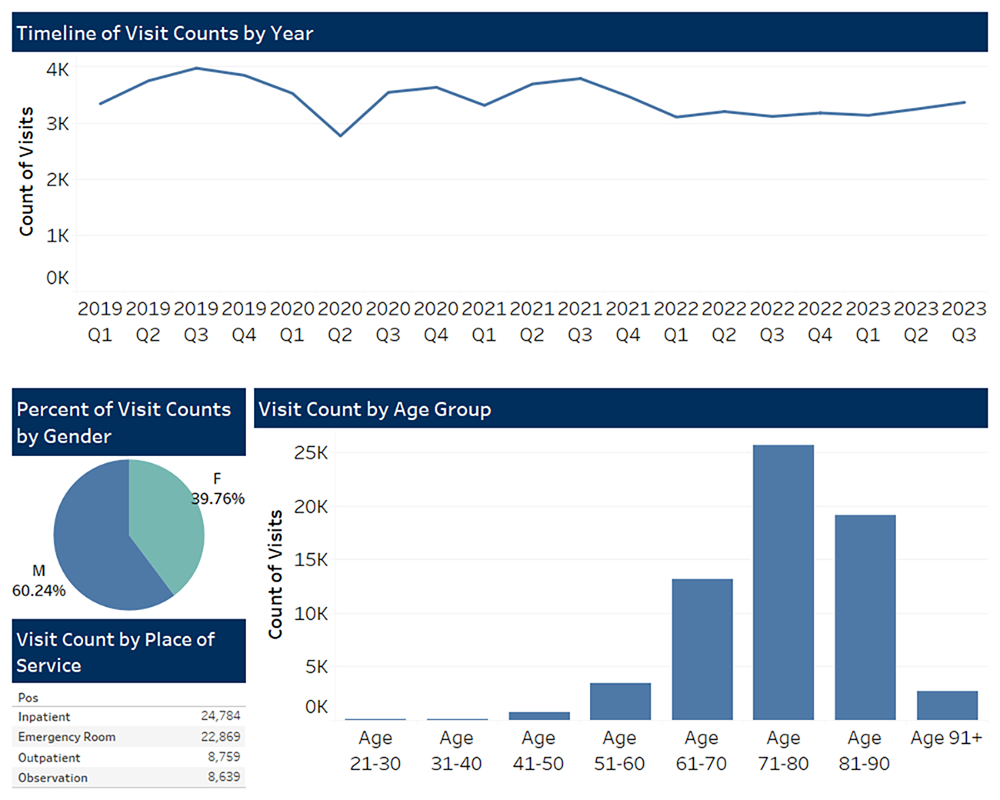Click here to view past issues
IN THIS ISSUE
- WHA and Members Back in D.C. Pushing for 340B Fix and Year-End Health Care Extenders Package
- Guest Column: Hospitals Are the Heart of Patient Care in Communities
- WHA Foundation Presents Scholarships at HOSA State Leadership Conference, Promotes “So Many Options” Campaign
- Register Today for the 2024 Wisconsin Rural Health Conference
- Froedtert ThedaCare Health’s Jacobson Headlines Cap Times’ Power Hour Breakfast
- Guest Column: Pulse: 2024 Property & Casualty Report
- Dr. Redwood Leads Sepsis Town Hall Discussion
- Substance Use Disorders Support & Education Series: Fostering Collaboration for Comprehensive Care
- Fast Facts from the WHA Information Center: April is Parkinson’s Awareness Month
EDUCATION EVENTS
Jan. 14, 2026
Caring for Wisconsin’s Caregivers Well-Being First Champion Challenge for Credentialing KickoffJan. 28, 2026
2026 WHA Health Care Leadership AcademyFeb. 25, 2026
2026 Advocacy DayClick here to view education event calendar
View more issues of The Valued Voice
Sign Up for WHA's Newsletter
Fast Facts from the WHA Information Center: April is Parkinson’s Awareness Month
April is known as Parkinson’s Awareness Month to increase education about the brain disorder. The National Institutes of Health states that Parkinson’s disease is a brain disorder that impacts one’s coordination and balance, and causes unintended movements, such as shaking and stiffness. The Parkinson’s Foundation writes, “Nearly one million people in the U.S. are living with Parkinson's disease. This number is expected to rise to 1.2 million by 2030.”
The number of people in the U.S. diagnosed with Parkinson’s disease each year is roughly 90,000 people. Parkinson’s disease is the second most common neurologic condition found in the United States after Alzheimer’s. The Parkinson’s Foundation also states that worldwide, it is estimated that almost 10 million people are living with Parkinson’s.


The WHA Information Center analyzed hospital claims from January 2019 to September 2023. In the timeline chart, there is a visible decrease in the number of visits over time. COVID-19 had a strong impact on visits in 2020 Q2. Men have a much higher visit count than women do—similar to what national trends see of men being affected by Parkinson’s disease more than women. The average age of a patient visiting for Parkinson’s disease is 75 years old. The age group with the highest number of visits is 71-80 years old. The place of service with the highest visit count is inpatient, but it is closely followed by the emergency department.
Below are some risk factors of Parkinson’s disease from the National Institute of Neurological Disorders and Stroke:
- Age—The average age of onset is about 70 years, and the incidence rises significantly with older age. However, a small percent of people with Parkinson’s disease has “early-onset” disease that begins before the age of 50.
- Biological sex— Parkinson’s disease affects more men than women.
- Heredity—People with one or more close relatives who have Parkinson’s disease have an increased risk of developing the disease themselves. An estimated 15-25% of people with Parkinson’s disease have a known relative with the disease. Some cases of the disease can be traced to specific genetic mutations.
- Exposure to pesticides—Studies show an increased risk of Parkinson’s disease in people who live in rural areas with increased pesticide use.
Fast Facts from the WHA Information Center: April is Parkinson’s Awareness Month
April is known as Parkinson’s Awareness Month to increase education about the brain disorder. The National Institutes of Health states that Parkinson’s disease is a brain disorder that impacts one’s coordination and balance, and causes unintended movements, such as shaking and stiffness. The Parkinson’s Foundation writes, “Nearly one million people in the U.S. are living with Parkinson's disease. This number is expected to rise to 1.2 million by 2030.”
The number of people in the U.S. diagnosed with Parkinson’s disease each year is roughly 90,000 people. Parkinson’s disease is the second most common neurologic condition found in the United States after Alzheimer’s. The Parkinson’s Foundation also states that worldwide, it is estimated that almost 10 million people are living with Parkinson’s.


The WHA Information Center analyzed hospital claims from January 2019 to September 2023. In the timeline chart, there is a visible decrease in the number of visits over time. COVID-19 had a strong impact on visits in 2020 Q2. Men have a much higher visit count than women do—similar to what national trends see of men being affected by Parkinson’s disease more than women. The average age of a patient visiting for Parkinson’s disease is 75 years old. The age group with the highest number of visits is 71-80 years old. The place of service with the highest visit count is inpatient, but it is closely followed by the emergency department.
Below are some risk factors of Parkinson’s disease from the National Institute of Neurological Disorders and Stroke:
- Age—The average age of onset is about 70 years, and the incidence rises significantly with older age. However, a small percent of people with Parkinson’s disease has “early-onset” disease that begins before the age of 50.
- Biological sex— Parkinson’s disease affects more men than women.
- Heredity—People with one or more close relatives who have Parkinson’s disease have an increased risk of developing the disease themselves. An estimated 15-25% of people with Parkinson’s disease have a known relative with the disease. Some cases of the disease can be traced to specific genetic mutations.
- Exposure to pesticides—Studies show an increased risk of Parkinson’s disease in people who live in rural areas with increased pesticide use.
IN THIS ISSUE
- WHA and Members Back in D.C. Pushing for 340B Fix and Year-End Health Care Extenders Package
- Guest Column: Hospitals Are the Heart of Patient Care in Communities
- WHA Foundation Presents Scholarships at HOSA State Leadership Conference, Promotes “So Many Options” Campaign
- Register Today for the 2024 Wisconsin Rural Health Conference
- Froedtert ThedaCare Health’s Jacobson Headlines Cap Times’ Power Hour Breakfast
- Guest Column: Pulse: 2024 Property & Casualty Report
- Dr. Redwood Leads Sepsis Town Hall Discussion
- Substance Use Disorders Support & Education Series: Fostering Collaboration for Comprehensive Care
- Fast Facts from the WHA Information Center: April is Parkinson’s Awareness Month

